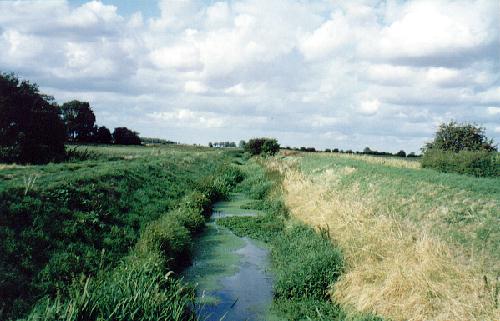|
THE GREAT CHANNEL known as the Car Dyke was probably constructed early in the second century AD and built purely for drainage purposes to produce more fertile land for corn crops but the most popular theory that transport was the main aim, opening up the entire county to the movement of heavy goods, persists and the evidence of population growth along its banks which would have occurred in this instance is too strong for it to be dismissed. Indeed, the remains of forts, placed as part of a defensive strategy, have been discovered in past years at Billingborough, Garwick (Heckington), Walcot, Linwood and Washingborough and it is doubtful that such measures would have been taken had the waterway been intended for purely agricultural rather than military purposes. It was most certainly one of the greatest engineering feats carried out by the engineers of the mighty Roman Empire which ruled Britain for almost 400 years from 43 AD to 410 AD and although unlikely, the popular theory persists that it was built to carry food and supplies from East Anglia for their advancing armies in the north, the main cargoes being corn, wool for uniforms, leather for tents and shields, and salted meat. The construction of the canal and subsequent use to provide a continuous inland water transport system from Cambridge to York was responsible for the many communities that sprang up on its banks and have now become established towns and villages. The waterway between Bourne and Morton has shown evidence of the existence of soak ditches parallel to the canal to take the water from the field ditches and discharge it into the canal, a forerunner of our present fenland drainage system. The photograph of the Car Dyke (above) was taken at Dunsby Fen, four miles north of Bourne, and although an attractive fenland waterway today, it shows little of its importance in the communication and transport system of Roman Britain. An illustrated history of the Car Dyke and an historic
assessment of its origins Return to HOME PAGE MAIN INDEX
|
